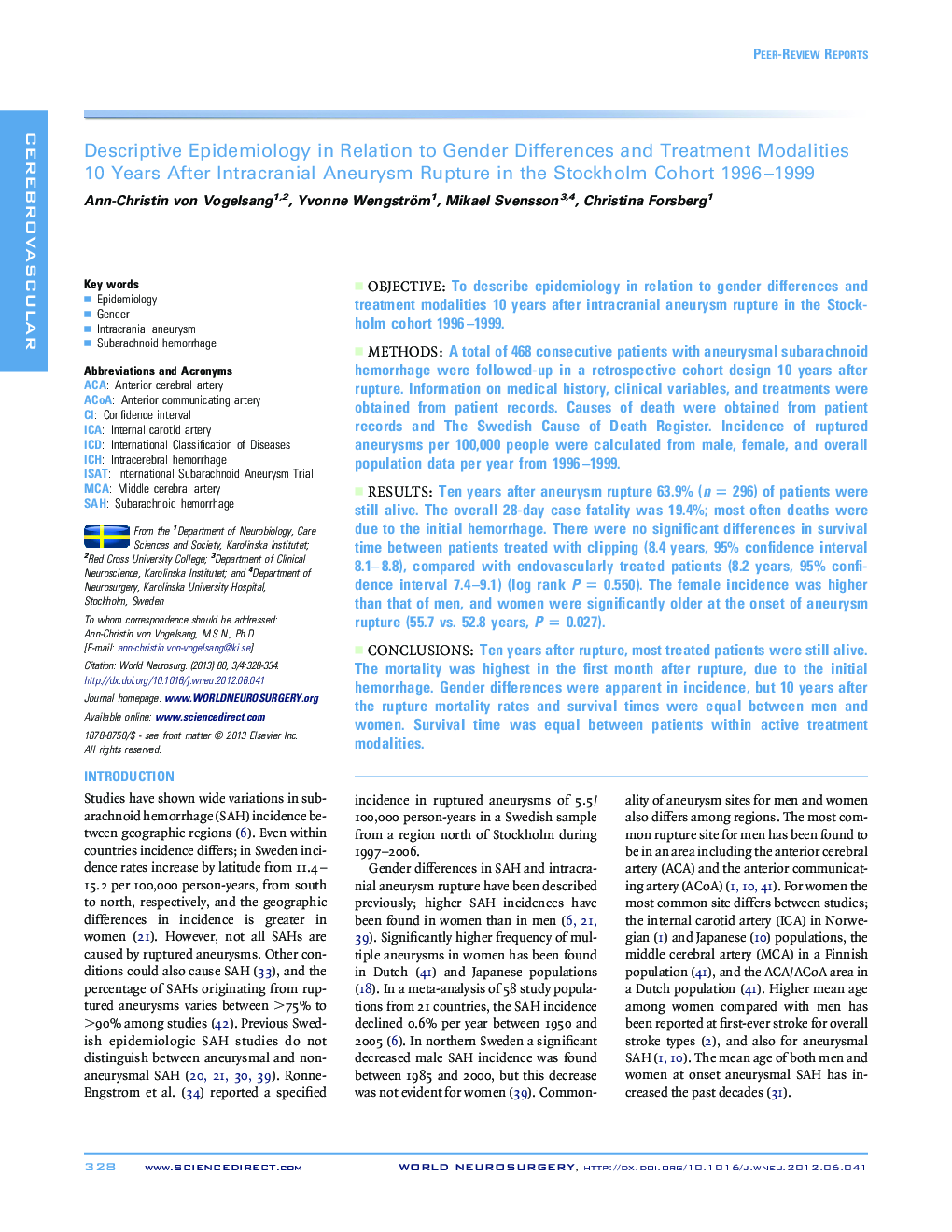| کد مقاله | کد نشریه | سال انتشار | مقاله انگلیسی | نسخه تمام متن |
|---|---|---|---|---|
| 3096117 | 1581476 | 2013 | 7 صفحه PDF | دانلود رایگان |

ObjectiveTo describe epidemiology in relation to gender differences and treatment modalities 10 years after intracranial aneurysm rupture in the Stockholm cohort 1996–1999.MethodsA total of 468 consecutive patients with aneurysmal subarachnoid hemorrhage were followed-up in a retrospective cohort design 10 years after rupture. Information on medical history, clinical variables, and treatments were obtained from patient records. Causes of death were obtained from patient records and The Swedish Cause of Death Register. Incidence of ruptured aneurysms per 100,000 people were calculated from male, female, and overall population data per year from 1996–1999.ResultsTen years after aneurysm rupture 63.9% (n = 296) of patients were still alive. The overall 28-day case fatality was 19.4%; most often deaths were due to the initial hemorrhage. There were no significant differences in survival time between patients treated with clipping (8.4 years, 95% confidence interval 8.1–8.8), compared with endovascularly treated patients (8.2 years, 95% confidence interval 7.4–9.1) (log rank P = 0.550). The female incidence was higher than that of men, and women were significantly older at the onset of aneurysm rupture (55.7 vs. 52.8 years, P = 0.027).ConclusionsTen years after rupture, most treated patients were still alive. The mortality was highest in the first month after rupture, due to the initial hemorrhage. Gender differences were apparent in incidence, but 10 years after the rupture mortality rates and survival times were equal between men and women. Survival time was equal between patients within active treatment modalities.
Journal: World Neurosurgery - Volume 80, Issues 3–4, September–October 2013, Pages 328–334